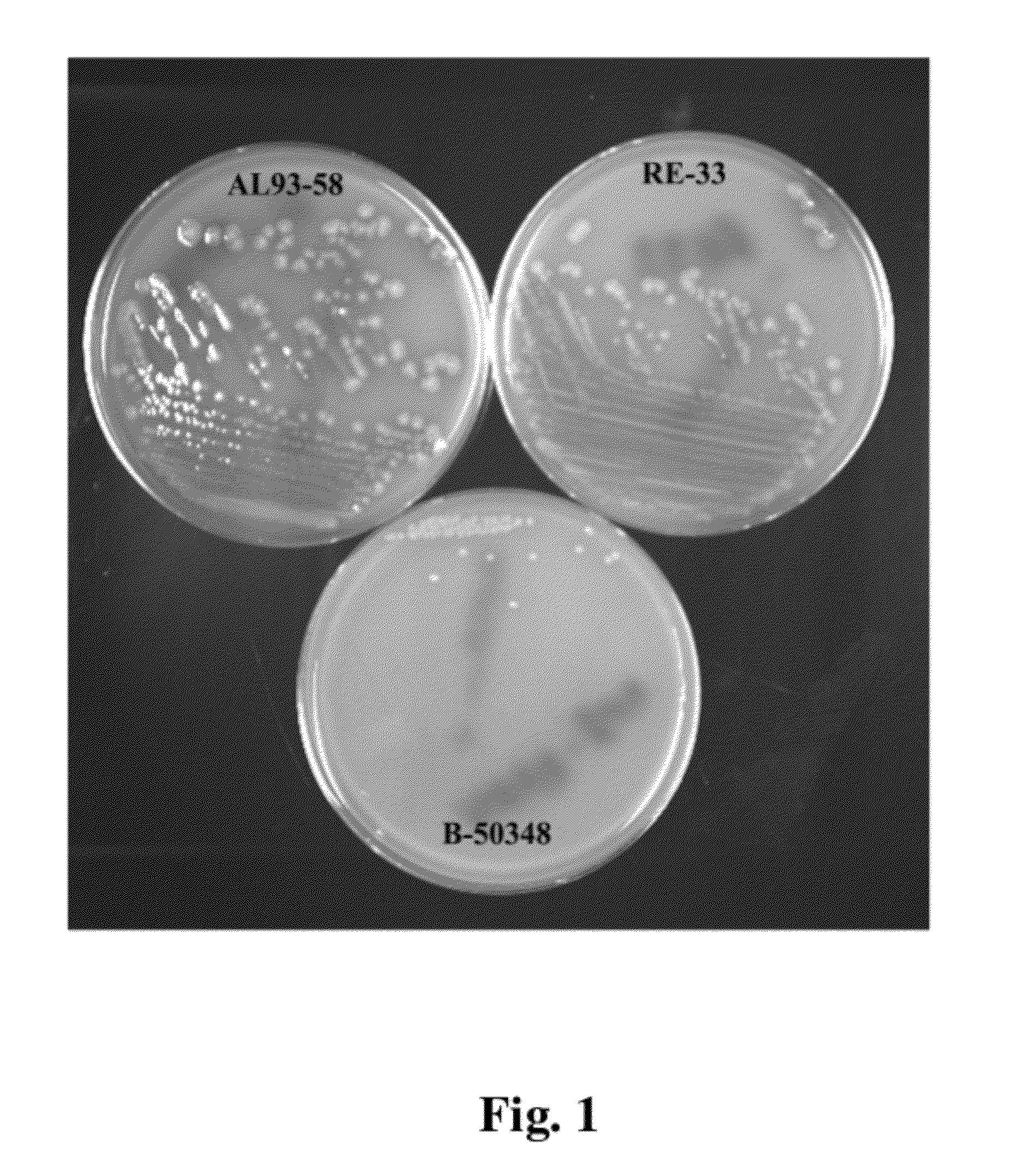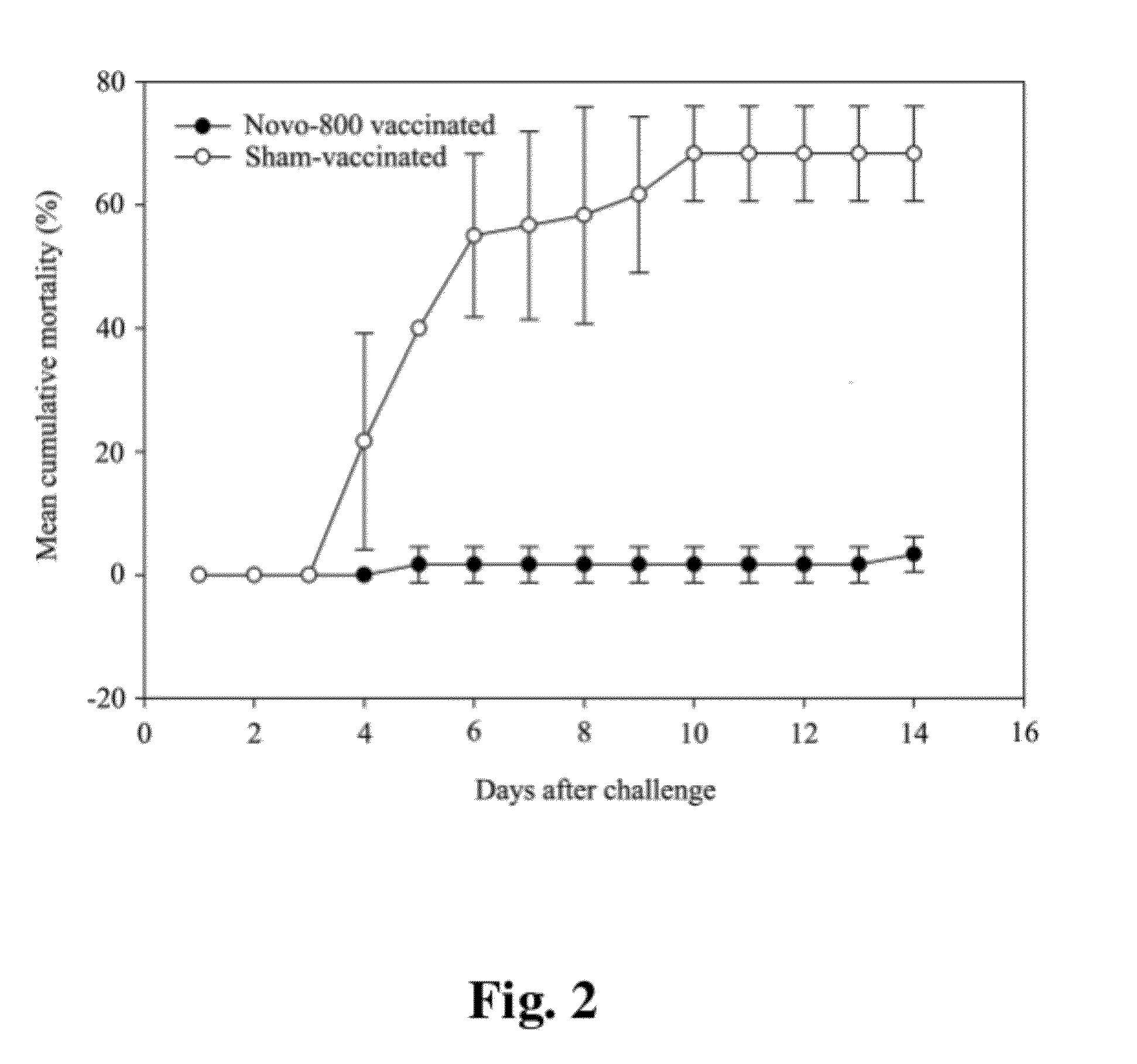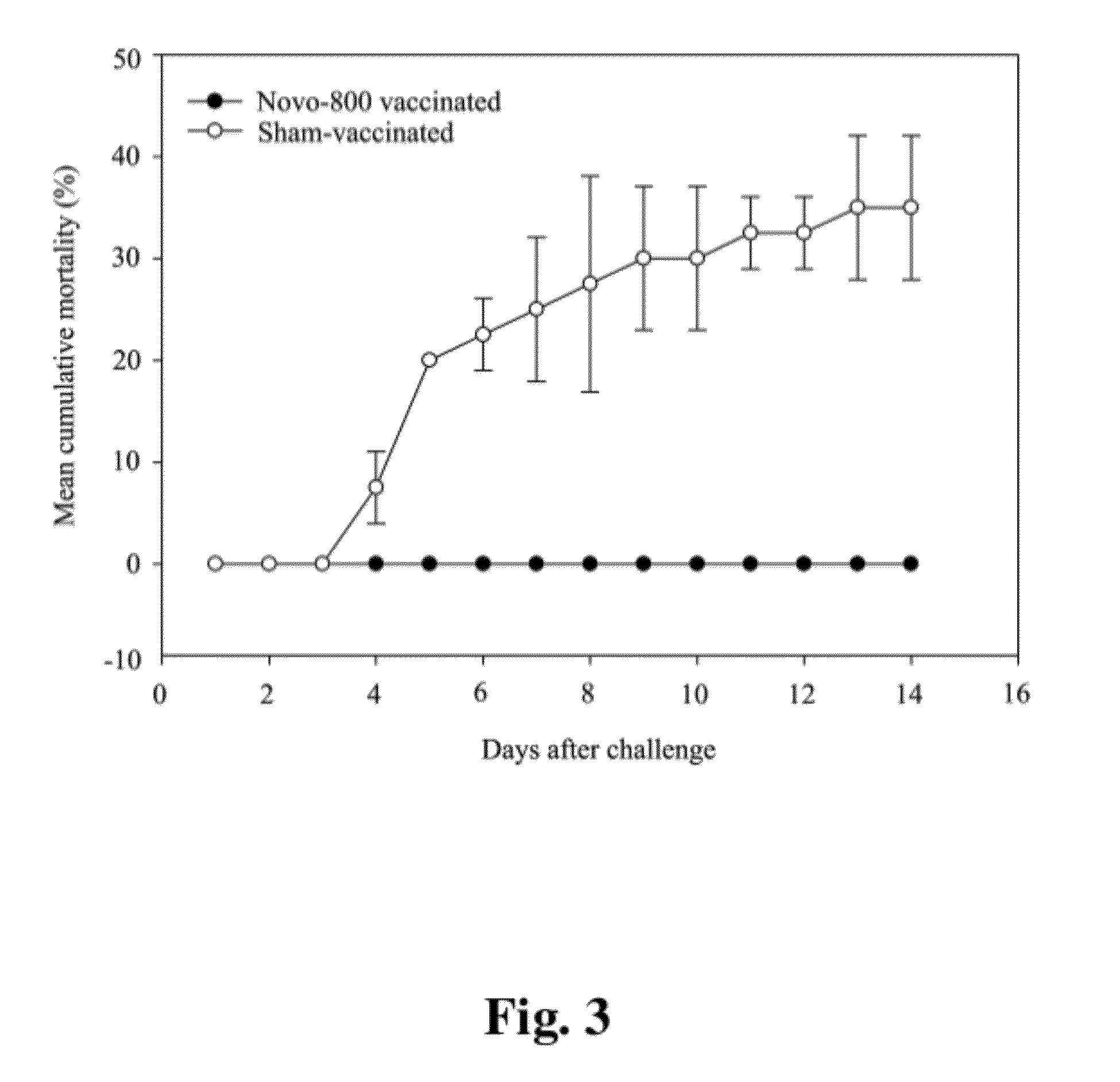Attenuated Live Vaccines for Aquatic Animals
a live vaccine and aquatic animal technology, applied in the field of microorganisms and vaccines, can solve the problems of hemorrhagic septicemia, constant threat of disease, and shutting down of processing lines
- Summary
- Abstract
- Description
- Claims
- Application Information
AI Technical Summary
Benefits of technology
Problems solved by technology
Method used
Image
Examples
example 1
[0093]A virulent strain of Edwardsiella ictaluri, strain AL93-58, was used for induction of novobiocin resistance. The strain was isolated in 1993 from diseased catfish in Alabama and is stored at the Aquatic Animal Health Research Unit, Auburn, Ala. Initial cultures of the AL93-58 strain were grown in brain heart infusion broth containing no antibiotics at approximately 27 degrees C. for about 24 hours. The virulent strain of AL93-58 was then subjected to selection for resistance to novobiocin By culturing the bacterium in brain heart infusion broth (BHI) (Fisher Scientific, Pittsburgh, Pa.) containing different concentrations of novobiocin as detailed in Table 1. The initial concentration of novobiocin that allowed growth of AL93-58 was approximately 12.5 μg / ml. After 12 passages of AL93-58 in BHI culture media containing higher doses of novobiocin, the novel novobiocin-resistant strain of AL93-58 Novo-800 (NRRL B-50348) was able to grow in BHI broth containing approximately 800 μ...
example 2
[0095]The growth and biochemical characteristics of Edwardsiella ictaluri Novo-800 were determined and compared to other strains of E. ictaluri. When Edwardsiella ictaluri AL93-58, Edwardsiella ictaluri Novo-800, and a rifampicin resistant Edwardsiella ictaluri RE-33 as described by Klesius and Shoemaker (1999, Adv. Vet. Med., Volume 41, 523-537) were plated on 5% sheep blood agar plates, the growth of Edwardsiella ictaluri AL93-58 were the fastest, followed by Edwardsiella ictaluri RE-33. However, the growth of Edwardsiella ictaluri Novo-800 was the slowest (FIG. 1).
[0096]Biochemical analysis using API-20E bacterial identification test strip (Biomérieux, Durham, N.C.) revealed that Edwardsiella ictaluri AL93-58, Edwardsiella ictaluri Novo-800, and Edwardsiella ictaluri RE-33 were identical (Table 2).
TABLE 2Results of the API-20E bacterial identification test strip forEdwardsiella ictaluri AL93-58, Edwardsiella ictaluriNovo-800, and Edwardsiella ictaluri RE-33Results (positive or ne...
example 3
[0097]To study the safety of Edwardsiella ictaluri strain Novo-800 (NRRL B-50348) compared to E. ictaluri AL93-58 and E. ictaluri RE-33, the three strains of E. ictaluri were cultured overnight in brain heart infusion broth at approximately 27 degrees C. A total of 1120 channel catfish (Ictalurus punctatus) were exposed to the three strains of E. ictaluri by bath immersion. All channel catfish (Industry pool strain, USDA, ARS, Catfish Genetics Research Unit, Stoneville, Miss.) used in this study were raised at the USDA ARS Aquatic Animal Health Research facility located at Auburn, Ala. and naïve to E. ictaluri. Bath immersion was performed by immersing catfish in water containing different concentrations (colony forming unit / CFU; Table 3) of Edwardsiella ictaluri for one hour. Mortalities were recorded for 14 days post exposure to E. ictaluri.
TABLE 3Safety of Edwardsiella ictaluri AL93-58, RE-33, andNovo-800 to catfish by bath immersionStrain usedFishin bathweightNo.ExposureDose.imm...
PUM
| Property | Measurement | Unit |
|---|---|---|
| concentration | aaaaa | aaaaa |
| concentration | aaaaa | aaaaa |
| concentration | aaaaa | aaaaa |
Abstract
Description
Claims
Application Information
 Login to View More
Login to View More - R&D
- Intellectual Property
- Life Sciences
- Materials
- Tech Scout
- Unparalleled Data Quality
- Higher Quality Content
- 60% Fewer Hallucinations
Browse by: Latest US Patents, China's latest patents, Technical Efficacy Thesaurus, Application Domain, Technology Topic, Popular Technical Reports.
© 2025 PatSnap. All rights reserved.Legal|Privacy policy|Modern Slavery Act Transparency Statement|Sitemap|About US| Contact US: help@patsnap.com



